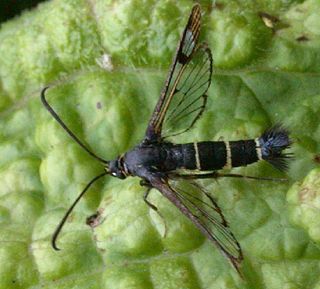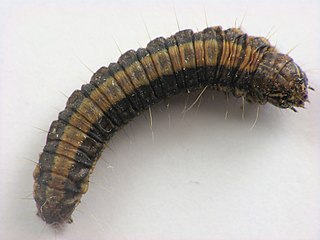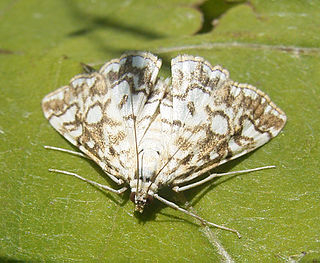Related Research Articles

The Sesiidae or clearwing moths are a diurnal moth family in the order Lepidoptera known for their Batesian mimicry in both appearance and behaviour of various Hymenoptera.

Thomas Walter Hampson is an American lyric baritone, a classical singer who has appeared world-wide in major opera houses and concert halls and made over 170 musical recordings.
Sir George Francis Hampson, 10th Baronet was an English entomologist.

Pyraustinae is a large subfamily of the lepidopteran family Crambidae, the crambid snout moths. It currently includes over 1,400 species, the majority of them tropical but some found in temperate regions including both North America and Europe.

Spilomelinae is a very species-rich subfamily of the lepidopteran family Crambidae, the crambid snout moths. With 4,132 described species in 340 genera worldwide, it is the most speciose group among pyraloids.

Crambinae is a large subfamily of the lepidopteran family Crambidae, the crambid snout moths. It currently includes over 1,800 species worldwide. The larvae are root feeders or stem borers, mostly on grasses. A few species are pests of sod grasses, maize, sugar cane, rice, and other Poaceae. The monophyly of this group is supported by the structure of the tympanal organs and the phallus attached medially to the juxta.

Amata is a genus of tiger moths in the family Erebidae. The genus was erected by Johan Christian Fabricius in 1807.

Asura is a genus of moths in the subfamily Arctiinae erected by Francis Walker in 1854.

Eoophyla is a genus of moths of the family Crambidae. It was erected by Charles Swinhoe in 1900.

Pyrausta is a speciose genus of moths of the family Crambidae. The genus was erected by Franz von Paula Schrank in 1802.
Piletocera is a genus of moths of the family Crambidae. The genus was first described by Julius Lederer in 1863.

Syllepte is a genus of moths of the family Crambidae.

The Chrysauginae are a subfamily of snout moths. They are primarily Neotropical and include about 400 described species.

The Epipaschiinae are a subfamily of snout moths. Almost 600 species are known today, which are found mainly in the tropics and subtropics. Some occur in temperate regions, but the subfamily is apparently completely absent from Europe, at least as native species. A few Epipaschiinae are crop pests that may occasionally become economically significant.

Acentropinae is a fairly small subfamily of the lepidopteran family Crambidae, the crambid snout moths. Species of this subfamily are exclusively found in wetlands and aquatic habitats.
Tampea acanthocera is a moth of the subfamily Arctiinae first described by George Hampson in 1905. It is found on Sangihe in Indonesia.
Tampea accepta is a moth of the subfamily Arctiinae first described by Arthur Gardiner Butler in 1877. It is found on Borneo, the Philippines, Sangihe, Sulawesi, Sula Mangoli and the Kei Islands. The habitat consists of lowland forests.
Tampea hammatocera is a moth of the subfamily Arctiinae first described by Wileman and West in 1928. It is found on Luzon in the Philippines.
Tampea reversa is a moth in the subfamily Arctiinae. It was described by Francis Walker in 1862. It is found on Borneo and Java. The habitat consists of lowland areas and lower montane forests.
Tampea wollastoni is a moth in the subfamily Arctiinae. It was described by Walter Rothschild in 1916. It is found in Papua New Guinea.
References
| This Lithosiini-related article is a stub. You can help Wikipedia by expanding it. |